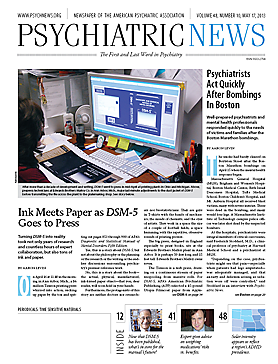This is the first of a two-part series.
Today’s patients can find almost anything on the Web, whether it is clothes to buy or information on what car to lease. Generation Y and younger rely on the Internet as their main information resource, spending less time at libraries and bookstores in favor of immediate gratification online. Many psychiatrists find themselves in a conundrum in deciding how to best embrace the digital age with regard to their practice. As Facebook expands from a popular Web site to a mobile-phone platform, social media are not only here to stay, they are at the center of the user experience online. This article focuses on how social media put their stamp on marketing your practice online.
It seems not too long ago that search engine optimization was the key to helping patients find your practice online. Creating multiple links to your site, embedding key search terms, and updating content were just some of the ways to increase the prominence of a Web site. While these strategies still apply, social media have added a new wrinkle to making a psychiatric practice Web site more visible.
Facebook
Many physicians have created a Facebook page for professional purposes, especially if they are plastic surgeons or medical media icons such as Dr. Mehmet Oz. The majority of the sites have posts on recent medical news, as well as promotions for “specials” on botulism toxin injections and other procedures. Most psychiatrists on Facebook use it to promote the media side of their career, such as doing television and radio shows or media-based consultations. Very few psychiatrists use Facebook for direct marketing or communication to patients. In many ways, this boundary makes sense given the nature of the therapeutic relationship with patients. It would be somewhat strange that your patients would “like” your Facebook page, and depending on what they see posted, it could impact how they perceive you.
It is of great significance that the default settings allow anyone to post comments and pictures to your account. Unless you take the time to set the security settings for each Facebook feature, you have no control over what gets posted there. Friends may not distinguish your personal Facebook page from your professional page, and so may upload something that you don’t want everyone to see. By the time you delete anything potentially embarrassing, people may have already seen it.
While Facebook can be used for professional purposes, the potential dilemmas created by the overlap and interface between friends, family, and professional aspects of your life make it less than ideal as a social media marketing tool for professional purposes such as a psychiatric practice.
Twitter
Twitter has now become the de facto Internet standard for reaching out to the public, both online and via traditional media such as television. “Tweets” are 140-word character messages sent from a Twitter account to “followers” who sign up to receive these messages. Twitter started out on mobile phones using text messages, but has now moved onto computers, tablets, and smartphones. It was only four years ago that actor Ashton Kutcher challenged CNN in a Twitter popularity contest to collect 1 million followers. Many television shows feature tweets from people with comments regarding a variety show or a topic on the news. Even the royal wedding broadcast in 2011 featured tweets, with the goal of converting viewers into participants. Recently, the Associated Press had its Twitter account hacked, and a phony tweet regarding bombs going off in the White House prompted the stock market to dip before many realized it was a hoax.
Many physicians and health care facilities also have a presence on Twitter. For example, the University of Massachusetts Psychiatry Department has a Twitter feed that highlights different faculty, job opportunities, or lectures that might interest the public. Physicians who are involved with health care media have a Twitter presence, and they use their tweets to promote their blog posts and highlight interesting things they found online. In a cursory review of these Twitter accounts, it is difficult to determine whether any patients are following these physicians. Given that these tweets are not geared toward patient care, it is unlikely that they create any potential violations of confidentiality. On a related note, whether these same tweets may help prospective patients to consider a psychiatrist’s practice is impossible to determine.
LinkedIn
LinkedIn is the largest professional networking site online today. It has well over 200 million members in 200 countries and territories. Initially, it has been the domain for networking in the information technology sector; however, now practically all industries are represented in terms of membership. Profiles created on LinkedIn are similar to online curriculum vitae, providing information on work experience, education, credentials, and skills. It principally has been a great forum for recruiters to find new talent in their search, and likewise, job seekers can find jobs posted directly on LinkedIn or through their network of contacts.
While maintaining a professional focus, LinkedIn has added a more Facebook-like feel with news posts from your connections with topics such as new connections for your contacts, their updated job profiles, endorsements of people, and topics of interest. Despite the professional nature of the site, it is not truly set up for attracting patients to your psychiatric practice. Instead, LinkedIn is one way to connect to other providers, such as therapists and physicians in other fields for potential referrals. One caveat with LinkedIn is that many of your patients are probably already on LinkedIn, and they might invite you to be a “connection.” Most psychiatrists find this request to be a potential boundary crossing and politely decline in person, citing privacy reasons. ■

